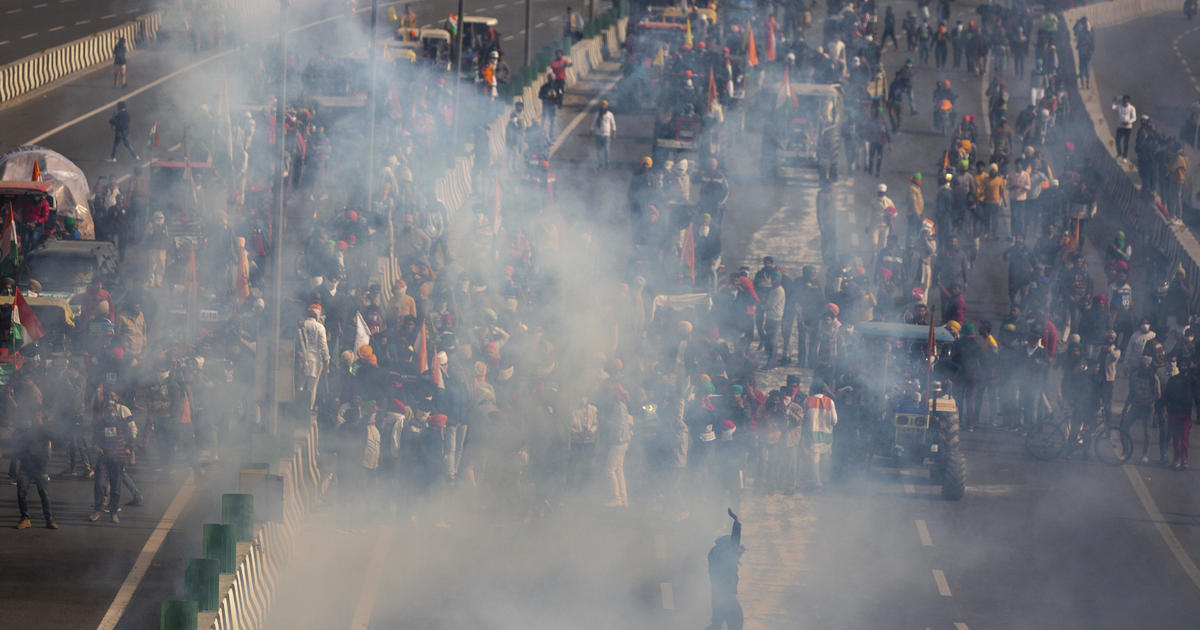Altaf Qadri / AP
New Delhi – AN months-long stalemate between India’s farmers and their government led to further clashes between police and protesters in the capital, Delhi, on Tuesday. At least one farmer died and dozens of people were injured in the clashes, and some policemen were also injured, according to authorities.
The large-scale clashes were the worst violence in weeks amid what has become one of the most enduring labor clashes in Indian history – and one of the biggest challenges for Prime Minister Narendra Modi. Farmers planned big rallies for Tuesday to coincide with Republic Day in India, a national holiday that always involves a huge military parade through central Delhi.
Farmers – mainly from the states of Punjab and Haryana, known as India’s “rice bowl” – began to protest in mid-November, marching to Delhi and setting up makeshift camps on the capital’s borders. They have been steadfast ever since, occasionally organizing large bulldozer-driven marches into the capital.
They are demanding that Modi’s government repeal three agricultural laws implemented in September with the aim of deregulating the country’s agricultural sector. Farmers say the laws will help large companies, but they will destroy small farmers’ livelihoods, which form the backbone of the agricultural sector, which is equivalent to almost 15% of India’s $ 2.9 trillion economy.
Altaf Qadri / AP
In December, farmers received broad support for a one-day strike in India that blocked roads and railways and briefly stifled the flow of commodities across the country.
“We will not stop”
Police gave the farmers permission to hold a tractor rally on Tuesday outside Delhi – far from the city center where Republic Day celebrations were taking place. But several groups of protesters diverged from the designated route and headed for central Delhi, where the celebrations and parades were still taking place.
Farmers began to break through the barricades at border entry points and a group managed to enter New Delhi’s iconic Red Fort, raising their own flags in addition to the Indian national flag.
Dinesh Joshi / AP
The police used tear gas and accused the farmers who were protesting with cane while hundreds of tractors arrived in the capital. The government sent additional paramilitary forces in full shock equipment as clashes escalated in the afternoon.
“We want to send a clear message to the government: We are not going to stop, you have to remove the laws,” said an angry protester at Fort Red. It took police and paramilitary forces several hours to clean up the 17th century landmark.
Telephone and internet services in some parts of Delhi were interrupted at the end of the day and some metro stations in the capital were closed while the government tried to prevent the coordination of protesters.
Farmers suffering from India
Several rounds of negotiations between farmers’ leaders and the Modi government in recent months have failed to resolve the impasse.
Last month, the government offered to suspend agricultural laws, but farmers insisted on a total reversal of measures.
India’s agricultural sector has suffered in recent years thanks to outdated laws, droughts and floods fueled by climate change, and even grasshoppers destroying thousands of hectares of plantations.
Circumstances have pushed thousands of farmers indebted to suicide. More than 10,000 Indian farmers died of suicide in 2019 alone, according to government data.



